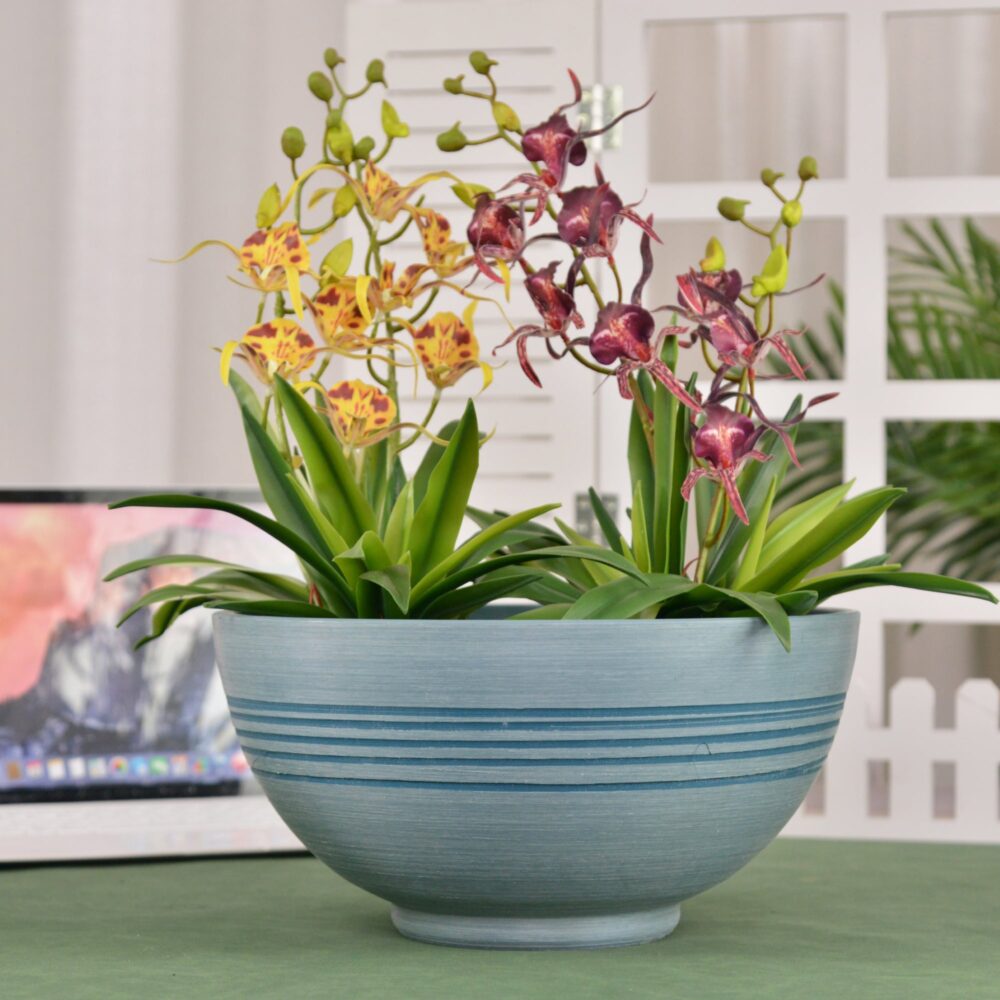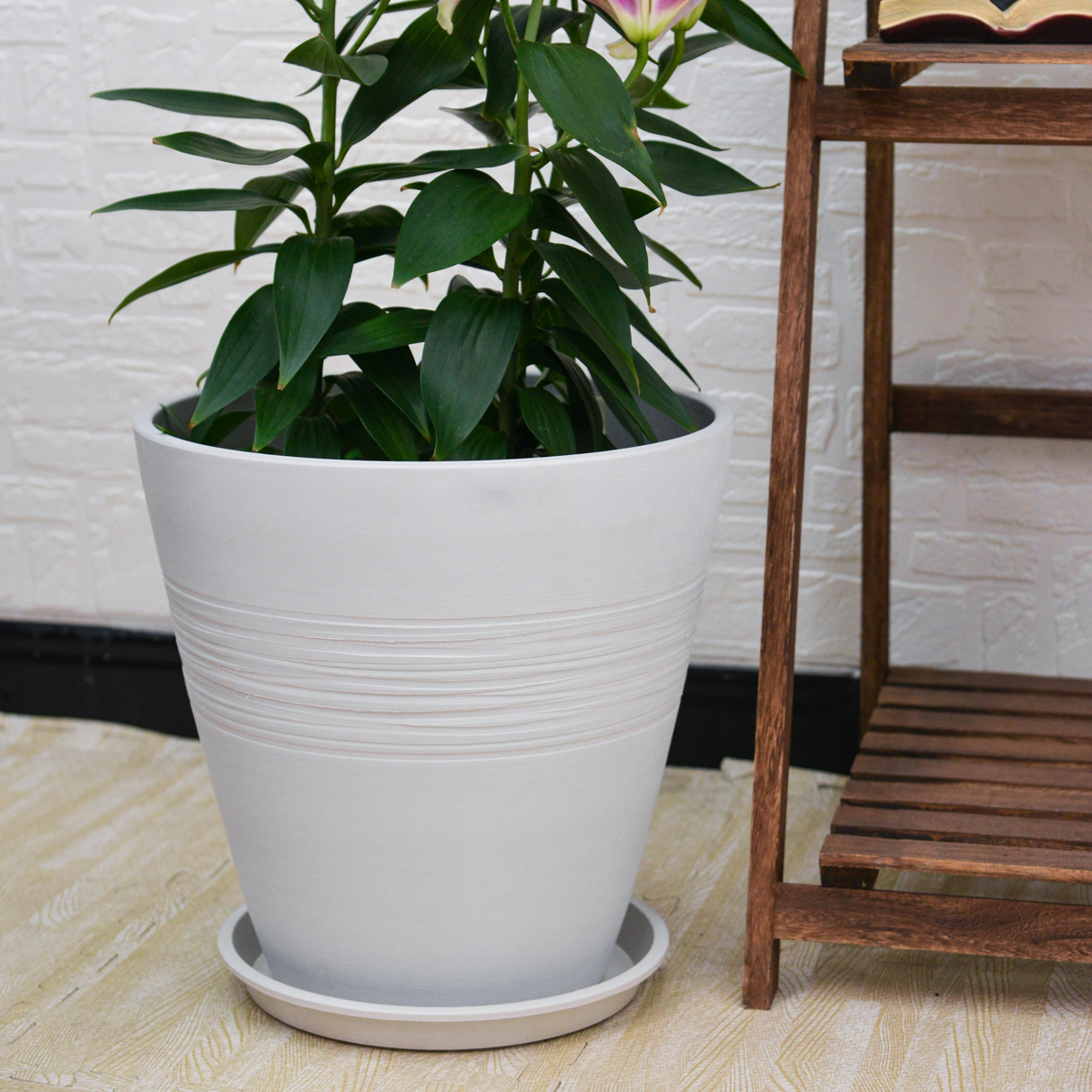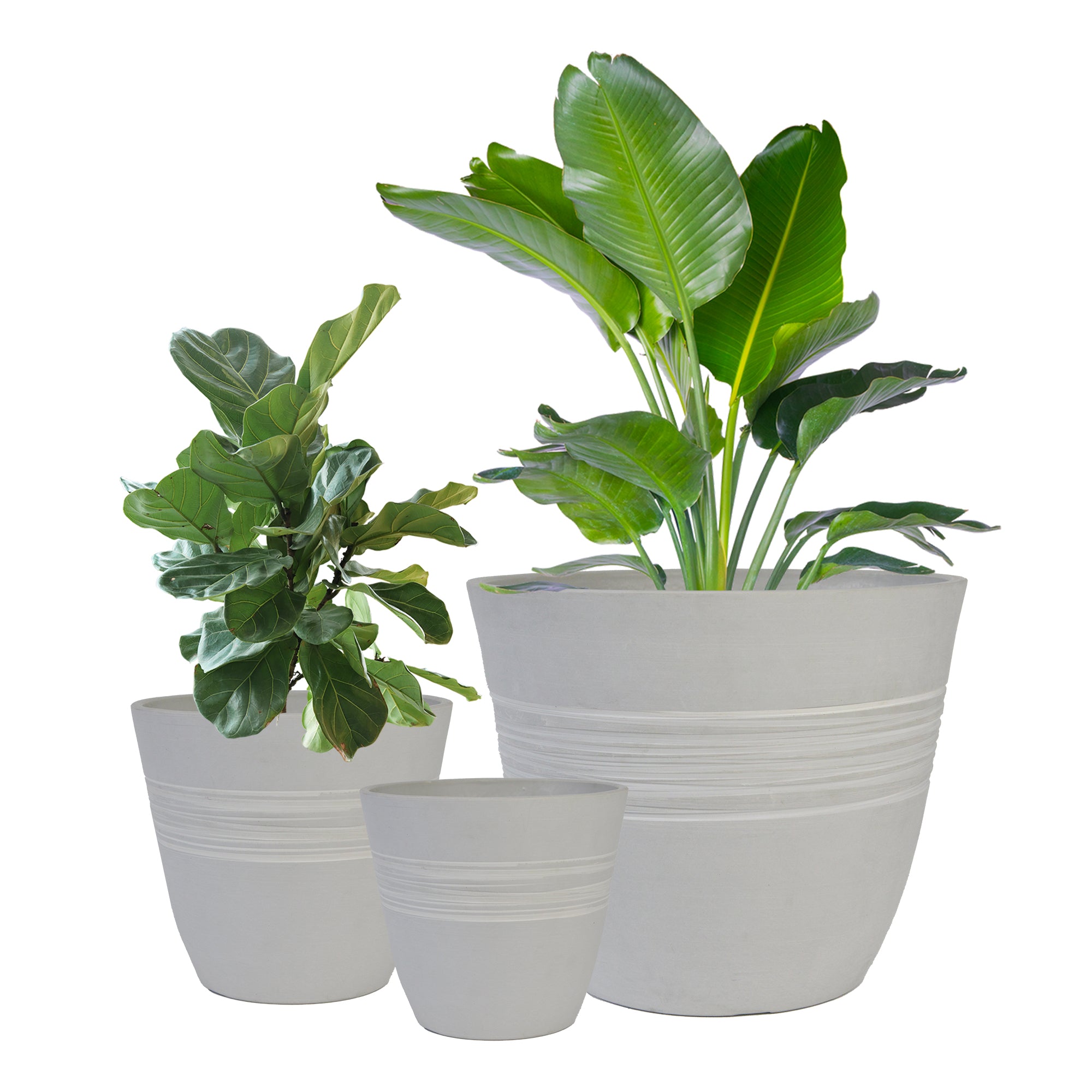Peace Lily Indoors: The Complete Guide to Growing Spathiphyllum Wallisii at Home
Looking to bring elegant white blooms and air-purifying benefits to your indoor spaces? Peace Lilies, scientifically known as Spathiphyllum wallisii, are classic and beloved houseplants prized for their graceful white flowers (spathes) and lush green foliage. These beautiful and relatively low-maintenance plants, belonging to the Araceae family and native to Central and South America, are perfect for adding a touch of tranquility and sophistication to your home. This comprehensive guide will provide you with everything you need to know to grow Spathiphyllum wallisii indoors, from selecting the right plant and pot to mastering essential care techniques for a thriving and elegant Peace Lily in your home.
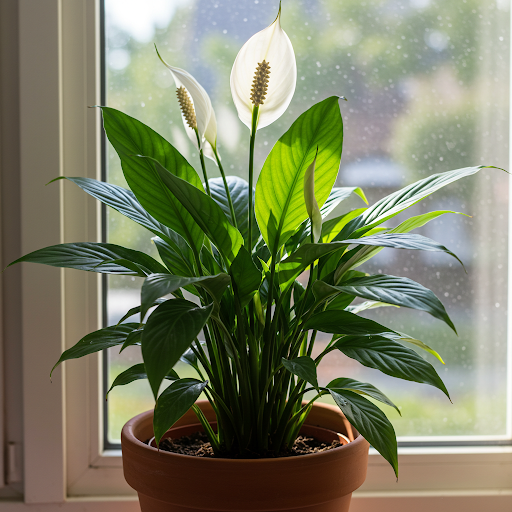
Peace Lilies,
What is Peace Lily (Spathiphyllum wallisii)?
Spathiphyllum wallisii, commonly known as Peace Lily, White Sails, or Spathe Flower, is a popular species within the Spathiphyllum genus, celebrated for its elegant white “flowers,” which are actually modified leaves called spathes that surround a creamy white spadix (flower spike). The true flowers are tiny and inconspicuous, located on the spadix. Peace Lilies are known for their air-purifying qualities, graceful appearance, and relative ease of care, making them a long-time favorite houseplant. Spathiphyllum wallisii is one of the smaller Peace Lily species, making it well-suited for indoor growing.
Can Peace Lilies (Spathiphyllum wallisii) Thrive Indoors?
Yes, Peace Lilies (Spathiphyllum wallisii) thrive exceptionally well indoors and are considered among the most popular and forgiving houseplants. Their preference for shade, consistent moisture, and warm temperatures aligns well with typical indoor environments. With proper care, they will reward you with beautiful blooms and lush foliage year-round, enhancing the beauty and air quality of your home.
Ideal Indoor Growing Conditions for Peace Lilies (Spathiphyllum wallisii):
- Varieties of Peace Lily (Spathiphyllum wallisii): While Spathiphyllum wallisii is a specific species, there are several cultivars and hybrids within wallisii and the broader Spathiphyllum genus that are commonly available as houseplants, offering variations in size, leaf shape, and bloom size. Popular indoor Peace Lily varieties include:
- Spathiphyllum wallisii ‘Domino’: Variegated foliage with splashes of white.
- Spathiphyllum wallisii ‘Petite’: A compact, smaller variety ideal for desks and smaller spaces.
- Spathiphyllum wallisii ‘Mauna Loa’: Larger white spathes and broader leaves.
- *Spathiphyllum ‘Sensation’: Very large, dramatic leaves and impressive size overall (though technically a hybrid, often sold as Peace Lily).
- *Spathiphyllum ‘Sweet Chico’: Compact and floriferous, known for frequent blooming.
- Light: Peace Lilies prefer low to medium indirect light. They are known for their shade tolerance and can thrive in lower light conditions than many flowering houseplants. Avoid direct, intense sunlight, which can scorch their leaves. Bright, indirect light will encourage more blooms, but they will still grow and produce their elegant foliage in lower light. North or east-facing windows are often ideal. South or west-facing windows can work if the light is filtered through sheer curtains or if the plant is placed further away from the window.
- Soil: Peace Lilies need well-draining soil that retains moisture. Use a high-quality potting mix formulated for indoor plants, African violets, or a general-purpose potting mix amended with peat moss, perlite, and vermiculite to improve drainage, aeration, and moisture retention.
- Watering: Peace Lilies prefer consistently moist soil and are sensitive to drying out. Water regularly to keep the soil evenly moist, but not soggy. Water when the top inch of soil just begins to feel slightly dry. Water thoroughly until water drains out of the drainage holes. Never let the soil dry out completely, as this can cause wilting and browning leaf tips. They are known to be dramatic when they need water and will visibly droop, but they usually recover quickly after watering. Reduce watering slightly in winter when growth slows down. Use room temperature water.
- Temperature: Average room temperatures between 65°F to 80°F (18°C to 27°C) are ideal. Peace Lilies are comfortable in typical household temperatures. Avoid exposing them to temperatures below 60°F (15°C) or sudden temperature fluctuations and cold drafts. They prefer warmth and consistent temperatures.
- Humidity: Peace Lilies thrive in higher humidity, mimicking their tropical rainforest origins. Aim for humidity levels of 50-70% or higher. Increase humidity by:
- Pebble Trays: Place pots on trays filled with pebbles and water (water level below the pot base).
- Humidifier: Use a room humidifier, especially during dry seasons or winter heating.
- Grouping Plants: Grouping Peace Lilies with other humidity-loving plants can create a more humid microclimate.
- Bathroom (if suitable light): A well-lit bathroom can be an ideal location due to naturally higher humidity.
- Misting: Misting the leaves occasionally can be beneficial, but pebble trays or humidifiers are more effective for consistent humidity.
Planting Your Peace Lily (Spathiphyllum wallisii) Indoors:
- Starting from Potted Plants or Divisions: The easiest way to start growing Peace Lilies indoors is to purchase established potted plants from nurseries, garden centers, or online retailers. They can also be propagated by divisions when repotting mature plants.
- Propagation by Division: When repotting a mature Peace Lily, you can gently divide the plant at the root ball, separating it into sections, ensuring each section has roots, leaves, and ideally a growth point or two. Plant each division in its own pot.
- Planting Time: Peace Lilies can be planted or repotted at any time of year indoors. Spring or early summer, at the start of the growing season, is generally recommended for optimal establishment and growth.
Choosing the Right Pots for Indoor Peace Lilies (Spathiphyllum wallisii):
- Suitable Pot Types: Select pots with good drainage and moisture retention. Plastic, ceramic, or glazed terracotta pots are all suitable. Plastic pots are often a good choice as they help retain moisture, which Peace Lilies appreciate, and are lightweight. Self-watering pots can also be beneficial for maintaining consistent moisture.
- Drainage: Good drainage is important to prevent soggy soil and root rot, although Peace Lilies prefer consistently moist conditions. Ensure your chosen pot has drainage holes at the bottom. You can also add a thin layer of gravel or pot shards at the base of the pot to improve drainage slightly.
- Pot Size: Choose a pot that is appropriately sized for the current size of the plant and allows for some growth. Peace Lilies have moderate root systems. Select pots that are not excessively large. For smaller plants, start with pots that are 6-8 inches in diameter. Mature Peace Lilies may need pots 8-12 inches or slightly larger in diameter. Avoid overpotting.
- Potting Mix: Use a moist, well-draining potting mix as described earlier.
Essential Care Tips for a Thriving Indoor Peace Lily (Spathiphyllum wallisii):
- Watering Schedule: “Keep Soil Moist, Never Soggy or Bone Dry”. Water regularly to maintain consistently moist soil. Check soil moisture frequently and water when the top of the soil just begins to feel slightly dry. Never allow the soil to dry out completely, but also avoid overwatering and soggy soil.
- Fertilizing for Blooms and Growth: Peace Lilies benefit from regular fertilization during the growing season (spring and summer) to encourage blooms and lush foliage. Fertilize every 4-6 weeks during the growing seasonwith a balanced liquid fertilizer diluted to half strength, or a fertilizer specifically formulated for flowering houseplants or peace lilies. Follow package instructions. Reduce or stop fertilizing during the fall and winter dormant period.
- Light Management for Blooms: Place in low to medium indirect light. Brighter indirect light will encourage more blooms, but they will still grow in lower light. Avoid direct sun. If your Peace Lily is not blooming, try moving it to a slightly brighter location.
- Humidity is Beneficial: Maintain higher humidity levels for optimal leaf health and bloom quality. Use pebble trays, humidifiers, or group plants as described earlier.
- Deadheading Spent Flowers: Remove spent or faded flowers (spathes) promptly by cutting them off at the base of the stem. This encourages the plant to produce more blooms and maintains a tidy appearance.
- Leaf Cleaning: The leaves of Peace Lilies can collect dust. Wipe the leaves with a damp cloth occasionally to keep them clean and glossy and allow them to photosynthesize efficiently.
- Repotting Schedule: Repot Peace Lilies every 1-2 years, or when they become root-bound or the potting mix is depleted. Repot in spring or early summer. They prefer to be slightly root-bound, so don’t rush to repot too frequently.
- Pest and Disease Control: Monitor Peace Lilies for pests like spider mites, mealybugs, and aphids. Overwatering can lead to root rot. Ensure proper drainage and avoid overwatering to prevent root rot. Treat any pest infestations promptly with insecticidal soap or neem oil. Fungal leaf spot diseases can sometimes occur in humid conditions; ensure good air circulation and avoid overhead watering if possible.
Popular Peace Lily Cultivars and Size Variations:
- Spathiphyllum wallisii ‘Domino’ (Variegated)
- Spathiphyllum wallisii ‘Petite’ (Dwarf)
- Spathiphyllum wallisii ‘Mauna Loa’ (Larger blooms)
- *Spathiphyllum ‘Sensation’ (Giant, dramatic leaves)
- *Spathiphyllum ‘Sweet Chico’ (Compact, floriferous)
- *Spathiphyllum ‘Alan Street’ (Known for large, fragrant blooms)
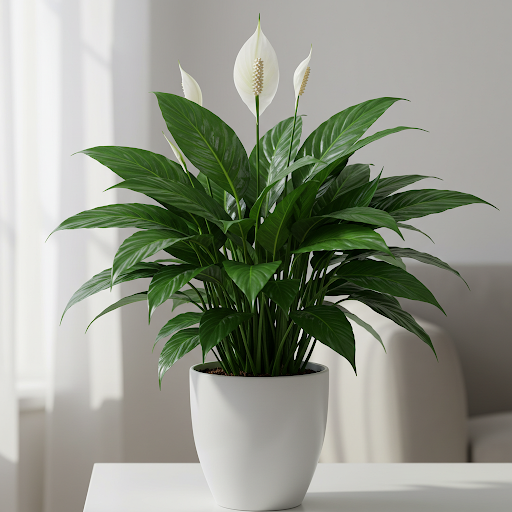
Peace Lilies,
In Summary:
Growing Peace Lilies (Spathiphyllum wallisii) indoors is a rewarding way to bring classic beauty, air purification, and a sense of calm to your home. Their elegant white blooms and lush green foliage make them a timeless houseplant favorite. By providing low to medium indirect light, consistently moist soil (but not soggy), higher humidity if possible, and regular care, you can easily cultivate thriving and beautifully blooming Peace Lilies indoors and enjoy their graceful presence year after year.
Important Note: Peace Lilies (Spathiphyllum) are considered mildly toxic if ingested due to calcium oxalate crystals, which can cause mouth and stomach irritation if consumed. Keep them out of reach of children and pets who may be tempted to chew on the leaves. The sap can also be mildly irritating to skin in some individuals, so wash hands after handling.
20T
By greenship|2024-08-13T06:42:22+00:00August 13, 2024|Categories: Hand-carving Series|
KC2-11V
By greenship|2024-08-16T05:39:50+00:00August 16, 2024|Categories: Hand-carving Series|
13 inch Planter for Indoor Plants, Set of 2 Modern Decorative Plant Pots with Drainage Hole, Cute Bowl Shape Flower Pots
By greenship-seo|2025-04-10T07:41:46+00:00January 10, 2025|Categories: Hand-carving Series|Tags: Decorative Flower Pots, Self-Watering Pots|
KC2-GS
By greenship|2024-08-16T06:30:21+00:00August 16, 2024|Categories: Hand-carving Series|
Plant Pots 6 inch 8 inch 12 inch for Indoor Outdoor Plants, Set of 3 Modern Decorative Planter with Drainage Hole, Decorative Flower Pots
By greenship-seo|2025-04-10T06:38:40+00:00January 16, 2025|Categories: Hand-carving Series|Tags: Decorative Flower Pots|
KC2-21G
By greenship|2024-08-13T06:19:08+00:00August 13, 2024|Categories: Hand-carving Series|



